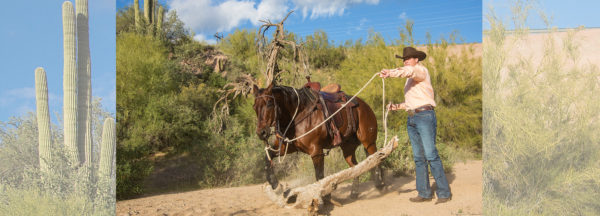Training Tip: Handle a Refusal Under Saddle

If you’re on the trail and your horse is reacting badly about going over an obstacle and you feel unsafe, don’t hesitate to get off him and send him over it from the ground. Dismounting is not a “cop out.” It doesn’t mean that you are letting the horse get away with disrespectful behavior. Rather, it puts you in a position to see to it that the horse navigates what’s in his path, and it keeps both of you safe.
When I apprenticed with Ian Francis, he told me: “There are a lot of heroes in the graveyard.” Too many people try to play the hero by riding a disrespectful or fearful horse through a situation, and they end up getting bucked off. They break their necks and die because they didn’t use their heads.
There’s no shame in getting off the horse and working through his fear or disrespect on the ground, especially if it puts you in a safer position. You can move the horse’s feet forwards, backwards, left and right on the ground just as well as you can from his back. A lot of people are under the impression that you should never get off a horse when you run into trouble because the horse will get away with his bad behavior and think that he won. The horse only “wins” if you get off and put him away, not if you get off and hustle his feet forwards, backwards, left and right.
Personally, I would much rather solve a problem on the ground than be in the saddle wishing I were on the ground. Once you have the horse confidently going over the obstacle from the ground, you can get back in the saddle and ask him to step over it. You only have one body, and you need to take care of it.
Keep in mind that the better prepared you are with groundwork and the more obstacles you’ve introduced to your horse at home, the better your trail ride will go. When you come across something that you’re having trouble with, you have another way of communicating with the horse and showing him that he can trust you. You’re not there to put him in any danger, or in any trouble. You’re there to help lead him and build his confidence.
